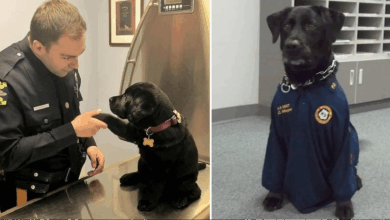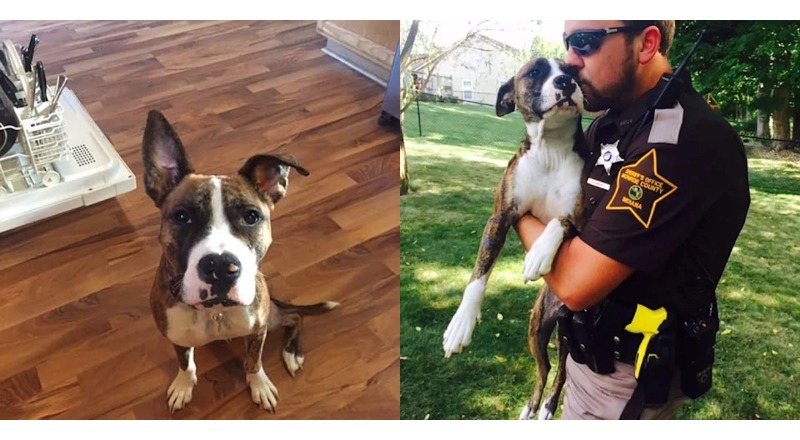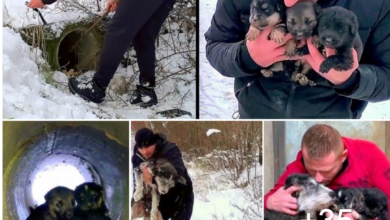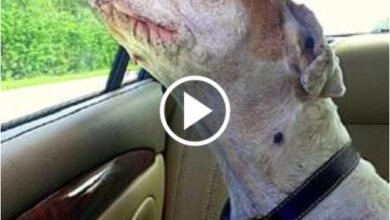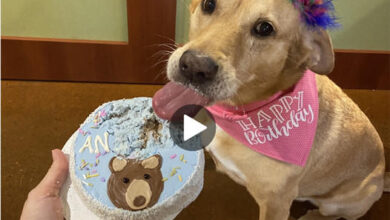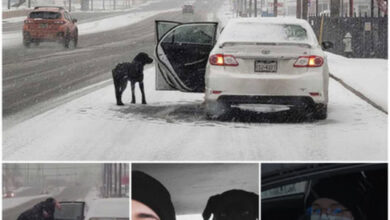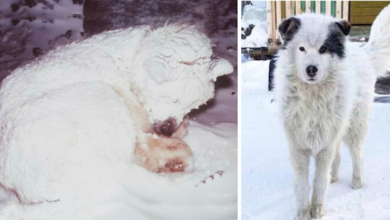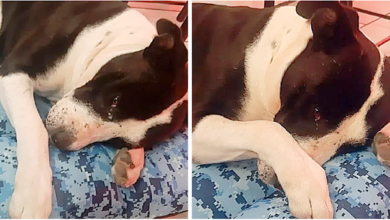How To Keep Your Dog Safe And Warm In Winter

Winter can be a magical time for you and your furry friend, with snow-filled walks and cozy nights by the fire. However, it’s important to remember that cold weather can pose serious risks to your dog’s health and safety.
As the temperature drops, it’s essential to take extra precautions to keep your four-legged companion warm and protected. Just like humans, dogs have different tolerance levels when it comes to cold weather. Some breeds are built for harsh winter conditions, while others may struggle in even mild temperatures. Additionally, factors such as age and health conditions can also impact how well your dog handles the cold.
This article will provide you with essential tips on how to ensure your pooch stays safe and warm during the chilly winter months. So grab a blanket and settle in – let’s make sure your pup is prepared for whatever winter throws their way!
Know Your Dog’s Breed and Health Condition
It’s important to know your dog’s breed and health condition so you can tailor their winter care accordingly. Different breeds have different needs, depending on their coat thickness and ability to withstand cold temperatures. For example, a Siberian Husky would fare better in the snow than a Chihuahua.
Furthermore, certain health conditions can exacerbate the risks of exposure to cold weather. Dogs with arthritis or joint problems may experience increased pain due to colder temperatures. Similarly, dogs with compromised immune systems may be more susceptible to illnesses during winter months.
To ensure your dog’s winter safety, it’s crucial to provide them with adequate food and hydration throughout the season. Cold weather requires extra energy expenditure for dogs in order to maintain body heat, so increasing their food intake is often necessary. Additionally, dehydration can occur even in colder temperatures if water sources freeze over. Make sure your dog always has access to fresh water indoors or by providing warm water throughout the day.
Protecting their paws is also essential for keeping your dog safe during winter months – salted sidewalks and icy terrain can cause painful cracks and abrasions.
By knowing your dog’s breed and health condition beforehand, you’ll be better equipped to take precautions that will keep them comfortable and healthy all season long.
Protect Their Paws
To protect your dog’s paws during winter, there are two key things you can do: use paw balm or wax, and put on dog booties.
Paw balm or wax helps to keep their pads moisturized and protected from harsh weather conditions like snow, ice, and salt.
Dog booties provide an extra layer of protection against the cold ground and prevent any cuts or scrapes from debris.
Use Paw Balm or Wax
Applying paw balm or wax to your pup’s paws is like giving them a cozy pair of boots for the winter. Not only does it provide a protective barrier against harsh weather conditions, but it also moisturizes and soothes dry, cracked paws.
You can either purchase paw balm or wax from your local pet store or make your own DIY paw balm recipe using natural ingredients like coconut oil, beeswax, and shea butter. The benefits of using paw wax include increased traction on slippery surfaces, reduced risk of frostbite, and overall improved paw health.
To apply the paw balm or wax, start by cleaning your dog’s paws thoroughly and trimming any excess hair around the pads. Then gently massage a small amount of the product onto each paw pad and in between the toes.
It’s important to let the product absorb for a few minutes before allowing your dog to walk on any surfaces so that it doesn’t rub off too quickly. However, keep in mind that while paw balm or wax can be very beneficial for protecting your dog’s paws during winter walks, they are not foolproof solutions.
For added protection, consider putting on dog booties which we’ll discuss next.
Put on Dog Booties
For a stylish and functional way to protect your pup’s paws from the cold, snow, ice, and salt, slip on some cute dog booties. Choosing the right size, materials, and brand for dog booties is crucial for their effectiveness. Poorly fitting booties can cause discomfort or even injury to your furry friend’s paws.
Measure your dog’s paw width and length before purchasing any boots. Look for high-quality materials that are durable enough to withstand harsh weather conditions. Some popular materials include neoprene, nylon, rubber, and leather. Additionally, consider buying booties with non-slip soles to provide extra traction on slippery surfaces.
It may take some time for your dog to get used to wearing booties but it’s worth the effort in keeping them warm and safe during winter walks. Start by introducing the boots gradually at home before venturing out into the cold. Allow your pup to sniff and investigate the new footwear at their own pace before attempting to put them on their paws.
Once they seem comfortable with the idea of wearing boots, try putting them on one paw at a time using positive reinforcement techniques such as treats or praise when they cooperate. Remember that patience is key when training your dog to wear booties!
To dress them in winter gear beyond just booties:
Dress Them in Winter Gear
To keep your furry friend warm and cozy during the winter months, it’s important to dress them in appropriate winter gear. First, choose the right type of coat for your dog based on its breed, size, and activity level.
Additionally, consider using dog sweaters and hoodies to provide an extra layer of warmth when it’s especially cold outside. With the right gear, you can ensure that your pup stays comfortable and protected while enjoying the great outdoors this winter season.
Choose the Right Type of Coat
Just like you’d wear a warm coat to protect yourself from the cold weather, your furry friend also needs a proper coat to stay safe and cozy. When choosing the right coat for your dog, there are several factors to consider.
First, take into account their size and breed. A larger dog with a thicker coat will typically need less insulation than a smaller dog or one with shorter hair. Additionally, consider the amount of time they’ll spend outside and the type of activities they’ll be doing. If they’ll be running around in the snow, they may need a heavier-duty coat.
When it comes to materials, some of the best options for dog coats include fleece and wool blends as well as waterproof materials like Gore-Tex or nylon. These materials offer warmth and protection from moisture without being too heavy or restrictive for your pup.
Make sure to measure your dog accurately before purchasing a coat and look for options with adjustable straps or closures so you can ensure a proper fit. With these considerations in mind, you can choose the perfect winter coat to keep your furry friend comfortable all season long.
As important as choosing the right type of coat is, sometimes layering up is key when it comes to keeping dogs warm during winter months. In addition to investing in an appropriate winter jacket, using sweaters or hoodies can provide additional warmth while also allowing for easy adjustment throughout the day depending on how much time your pet spends inside versus out in colder temperatures.
By taking these extra precautions and making sure your pup is bundled up properly during cold weather conditions, you’ll help keep them safe and healthy all season long!
Use Dog Sweaters and Hoodies
Using cozy dog sweaters and hoodies is like snuggling your furry friend in a warm hug on chilly winter days. Not only do these garments keep your pup warm, but they also provide styling options that can showcase their unique personality.
Here are some benefits of dressing up your dog in sweaters and hoodies:
- Warmth: Just like humans, dogs need to stay warm during the cold season. Sweaters and hoodies trap heat close to the body, preventing hypothermia and other cold-related illnesses.
- Comfort: The soft material of a sweater or hoodie can make your dog feel more comfortable while outside. It can also reduce skin irritation caused by dry air or harsh winds.
- Visibility: Brightly colored sweaters can make it easier for you to spot your pup when playing outside or going for walks.
By using dog sweaters and hoodies, you not only provide warmth but also add a touch of fashion to your furry friend’s winter wardrobe. To keep them active during this season, consider incorporating outdoor activities into their routine.
Keep Them Active
You can make sure your furry friend stays happy and healthy during the colder months by keeping them active with fun winter activities like playing in the snow or going for brisk walks. Both indoor activities and outdoor playtime will keep their energy levels up and prevent them from feeling bored or lethargic.
Don’t forget about their diet either! Healthy treats and proper winter nutrition are essential to keeping your dog energized and strong during cold weather. Make sure they’re getting enough protein, as this’ll help keep their coat thick and shiny. Additionally, adding fatty acids such as fish oil to their diet can help soothe any dry skin that may result from the harsh winter elements.
After all that activity, your furry friend will need a warm place to rest. In the next section, we’ll discuss how you can create a warm sleeping area for your dog to ensure they stay cozy throughout the night.
Create a Warm Sleeping Area
To ensure your furry friend stays cozy throughout the night, it’s important to provide them with a comfortable sleeping area. This is especially crucial during winter when temperatures drop significantly.
DIY beddings are an affordable and practical option to keep your dog warm and comfy. You can use old blankets or towels as padding, then cover them with a soft, insulating material such as fleece or flannel. These materials will trap your pet’s body heat, providing extra warmth.
Heating options are also available for those who live in extremely cold areas or have senior dogs who need extra warmth. Electric heating pads designed for pets are safe and efficient but remember to supervise their usage carefully. Another alternative is to use heated water bottles wrapped in towels or microwavable heating pads that retain heat for several hours.
Proper insulation and ventilation are essential when creating a sleeping area for your dog. Make sure the beddings you choose don’t block air vents so that there’s enough circulation of fresh air in the room. Good insulation will prevent drafts while still allowing fresh air into the sleeping area, ensuring your pet breathes comfortably all night long.
Now that you know how to create a warm sleeping area for your furry companion, let’s move on to the next step: be aware of the signs of cold stress. Your dog may experience hypothermia, frostbite or other cold-related illnesses if they’re exposed to low temperatures for extended periods without proper protection and care. Keep reading our guide to learn how to recognize these symptoms early on and prevent serious health issues from developing in your beloved pet!
Be Aware of the Signs of Cold Stress
Now that you’ve created a warm sleeping area for your furry friend, it’s important to keep an eye out for signs of cold stress. Understanding the impact of winter weather on your dog’s health is crucial in keeping them safe and healthy during the colder months.
Identifying cold stress: Symptoms and remedies should be familiar to every pet owner. If your dog is shivering, has a decreased heart rate or breathing, shows signs of lethargy or weakness, or has pale gums, they may be experiencing cold stress. It’s important to act quickly by warming up their body with blankets or heating pads and providing warm fluids like broth or water.
Winter weather can also cause dry skin and irritation for dogs. Using a humidifier in your home can help combat this issue. Additionally, consider using a moisturizing shampoo specifically designed for dogs during bath time.
Taking these precautions will ensure that your furry friend stays comfortable throughout the colder months.
As you prepare to travel with your dog this winter season, there are additional steps you can take to keep them safe and warm.
Take Precautions When Traveling with Your Dog
When hitting the road with your furry companion this winter, take traveling precautions and ensure car safety.
Before you embark on your journey, make sure that you’ve secured your dog in a seatbelt or crate to prevent them from being thrown around in the event of an accident. It’s important to never let your dog ride with their head out of the window as it can cause eye injuries from debris, and they could even jump out if something catches their attention.
In addition to securing your dog, be sure to pack plenty of cozy blankets and warm gear for the journey. Dogs shouldn’t be left alone in a cold car as they can quickly become hypothermic. If you need to step away from the car, make sure that someone stays behind to keep an eye on them or bring them inside a nearby building.
Remember that dogs are susceptible to frostbite just like humans so make sure they’re protected by dressing them in warm jackets and boots.
Always check weather reports before embarking on any long journeys during winter months. Snowstorms and icy roads can be dangerous for both drivers and passengers alike. If conditions are particularly bad or there’s a travel advisory issued for the area you plan on visiting, consider postponing your trip until it’s safer to travel – keeping yourself (and your furry friend) safe should always come first!
Conclusion
Congratulations! You now know how to keep your furry best friend safe and warm during the chilly winter months.
By knowing your dog’s breed and health condition, protecting their paws, dressing them in winter gear, keeping them active, creating a warm sleeping area, being aware of the signs of cold stress, and taking precautions when traveling with your dog, you can ensure that they are comfortable and healthy throughout the season.
Remember: Just like humans, dogs are susceptible to hypothermia and frostbite. So don’t take any chances when it comes to their well-being. Keep an eye on them at all times and make sure they’re not showing any signs of discomfort or stress.
After all, your dog is not just a pet but also a member of your family who deserves love and care. As William Shakespeare once said: “A dog will teach you unconditional love. If you can have that in your life, things won’t be too bad.”
Read more:
How To Keep Your Dog Safe And Have Fun During The Dog Days Of Summer!





